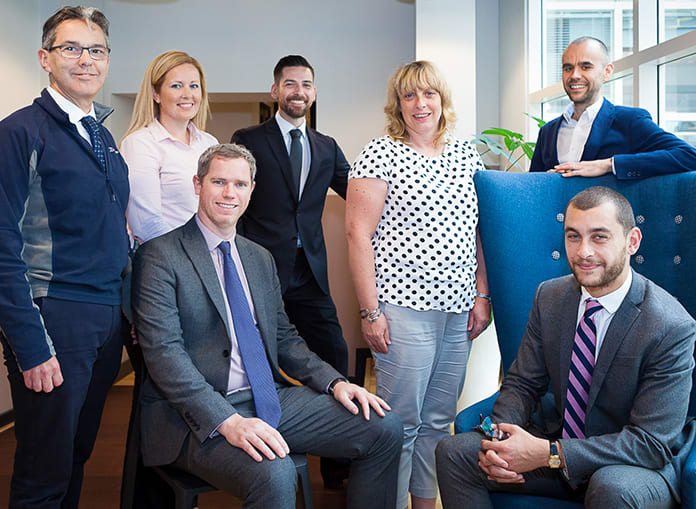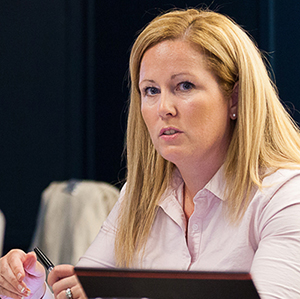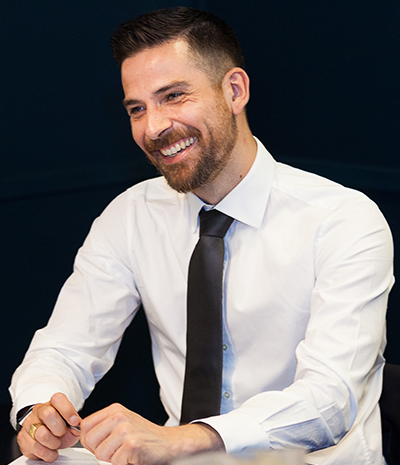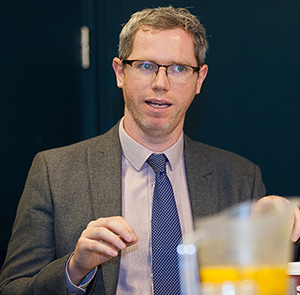BIM has the potential to deliver significant benefits to facilities management and reduce operational costs over the life cycle of a building – but clients and asset managers are slow to embrace it. BIM+ gathered experts from across the built environment sector to discuss how barriers to uptake among FM professionals might be overcome. Denise Chevin chaired the discussion.
Denise Chevin: How much take-up are you seeing with FM clients wanting digital assets as part of the procurement process?
Deborah Rowland: We are still a long way from moving BIM away from construction – it started there and the industry really ran with it and FM was left behind. We have tried to bring FM into it but we haven’t moved forward. It’s been pitched totally at construction, not pitching the benefits to the life cycle to the FM community or to the client.
The majority of FM is outsourced and if the client doesn’t drive it, it won’t happen. If the client is equally as uneducated as the FM about what BIM can bring, then BIM will still sit in construction.
David Throssell: I see infrastructure clients more interested and knowledgeable and demanding about asset management and recognising the value – but the building sector less so.
DC: What are the barriers to greater take-up?
Amir Nabil: It is a cashflow issue. A lot of our clients simply can’t afford to do BIM retrospectively. You’re trunking your electricity round the building and you already have issues, but even in new buildings you have multiple stakeholders financing the project – they will finance the project until the end of construction but have little incentive to take it further. They don’t have that long-term goal.
DR: Most FMs are running an existing estate, so to put BIM in it’s got to be a good business case. You are never going to decide to BIM the whole estate, it only really happens in a new-build scenario. It can be done – there are some great case studies – but you have to ask the client why they want it.
DT: There are tools available now to do image capture, and mobile tools etc are available. You can make a 3D model of the whole building, but what client is going to want it?
Paul Cook: BIM has grown in its own silo yet it’s a process that’s meant to get people to work collaboratively but it doesn’t get taken up like that. We are not involving the client and FM.

The round table panel

(Standing l-r): David Throssell, BIM and digital engineering operations manager, Skanska; Melanie Dawson, head of BIM, Graham Construction; Andrew Gamblen Digital manager, Willmott Dixon; Deborah Rowland, director public sector affairs, Sodexo (ex Cabinet Office); Paul Cook, head of technology, ISG
(seated l-r) Gary Pattison, certification technical expert – BIM and digital construction, BSI; Amir Nabil, associate consultant, Aecom

At ISG we have tried to change that approach. If BIM is made part of the design process right from beginning that valuable database of information you have at the end becomes part of the operation of building. CAFM [computer-aided facilities management] software is written bespoke and BIM sits inside it. It’s not about how to make BIM better it’s about how we consume it.
DC: And where is uptake and buy-in for BIM strongest?
Melanie Dawson: We were the first contractor in the UK and Ireland to achieve the BSI Kitemark for both BIM Design and Construction and Asset Management, and we are getting more contracts with clients asking for it. We do a lot of work on frameworks – the longer contracts of five or six years – and those lend themselves best to the BIM end-to-end life cycle.
We are more likely to get the whole team at the table at the same time. The frustration is getting the FM to that table, but the increase in number of frameworks should be a catalyst for change.
PC: I was at a frameworks conference and I hear again and again that operators aren’t involved at design phases so what I try to change in clients’ minds is “how can we design something that you have no idea what it’s going to be in the end?”
DR: FMs need to be there at phase zero, challenging architects and designers. We need to get them to a place where they are comfortable saying “if you design it that way, our cost of maintenance goes up here”.
DC: And what about consideration of life-cycle costs?
Andrew Gamblen: There is a disconnect between capex [capital costs] and opex [operational costs] and no-one is talking about totex [total costs]. Digital Built Britain is looking at it for the next level of BIM but it’s something that needs to be addressed now.

Melanie Dawson: We avoid technical terminology
Customers have a budget for capex and they don’t care what gets built as long as it meets that budget that year. The operation side comes from a different pot, not having the same restrictions as capex.
If you tell customers if they spend an extra £30K now and get us talking to your FM and asset management people we can save you x amount of money, but they don’t have that conversation and they don’t want it as they think they can’t afford it.
DR: Life-cycle costs far outweigh the cost of building, but it’s not a conversation they have.
AG: Clients who see the long-term benefit of BIM don’t mind that it costs a bit more or takes a bit longer, but it’s incredibly difficult to make people who don’t have that vision understand where the benefits are. They think it’s for the contractor.
If you have repeat customers it’s a lot easier. The difficulty comes with single customers who come in for one building every 15 years – the majority of construction is built up with SMEs and people who want single builds, not frameworks. It doesn’t matter how we try to persuade the big boys, we need to concentrate on the smaller companies and customers we need to educate.
DC: And how can we convince clients to push for BIM?
DT: Are we coming at this from the wrong direction? What we’re trying to do with information management is to collect and manage the information we need to hand over the asset information that goes straight into the asset management systems – not lobbing all the info over the wall at the end.
What we are trying to do is deliver information that you collect as you go to help you make decisions, and we will work to make sure all that goes straight into your FM systems – so that on day one you press the button and it works.
PC: But that’s the problem – you have a box of information about assets and that’s it. We also need information from the systems too: who’s in the building, what the temperature is, what’s the lighting. You want a big bowl of information from and about one place.
MD: It’s about communication. We choose not to use technical terms and use the word BIM – we avoid all technical terminology. We just ask “what systems do you use?” Planet and 3i are the two systems one client used so we said “Ok, read off the headings”, and they read off the headings – so we match our information to those headings, not using COBie.
No interoperability is needed as it’s the same thing – it’s seamless. It’s asking the right questions that makes them want to communicate with you.

Andrew Gamblen: ‘It’s willing to be collaborative and those are the projects where things move better.’
AG: The simplest way we have found that BIM and digital construction works is when you don’t speak about digital. You use true plain language speaking: what do you use to run your building? We have a project with FM involved at an early stage and we have been asking them questions.
We presented to them at the end and said we can pass it across in any format you want. Afterwards someone said: “It now makes perfect sense”, and asked why we aren’t using this.
DT: In the utilities sector more and more clients recognise they need a physical and digital asset. You map it to their asset management systems, make sure you’ve captured it in the model or in a database. It’s just a matter of realising where those fields are coming from.
PC: Imagine if every system in the building talks to the same platform. That’s where we are trying to get to. That changes the value of BIM – we have to change the way we consume it. What does BIM need to do? That’s what we have to ask.
DT: We shouldn’t think the digital asset has to be a 3D model – it is the information we need.
AN: The reality is about getting information from the people running the building. We spend more on soft FM than hard FM: it costs an awful lot to replace carpets, for example. There is a lot of technology chat, but on site it’s still a carpet-fitting company cutting carpet.
From an asset point of view there is still a huge gap between advised and actual. That’s the crux of the issue. Do you use fitted carpet or terrazzo flooring?
There are pros and cons but if you have an FM in the room they may be able to tell you they have these products across another 15 sites and they can tell you the economies of scale or the justification of spending more.
DR: BIM can only deal with hard FM it can’t really help you with the soft FM – the cleaning, catering, the people interaction elements. The people running and operating the building are the ones who have to live with what you design.
The opex budget needs to be up front whereas at the moment it comes right at the end and that’s too late. It needs to be with the capex, as there’s a direct correlation – and that isn’t done at the moment.
AG: What’s being skirted around is the amount of time it takes to do this – to gather the info, to sit down with FM companies – the time to get this organised. You can’t have a single meeting and expect it to be sorted.
The FM manager is often split over several customers and may only allot a limited amount of time for a particular project. If the customer wants to go from planning to construction in four weeks, how are you going to achieve that with asset management information? That needs to be addressed.

BSI’s Gary Pattison: Growing clients
DT: A lot of clients think the contractor will deliver magically Level 2 BIM – but it’s too late sometimes. When you look at the standards, the onus is on the client to define their information requirements and operation requirements, so we have half a chance of delivering what they need.
Often we’re starting at the end. At stage 3 if you have to do Level 2 BIM it is going to cost, whereas if you did it as stage zero it wouldn’t cost you anything.
GP: At BSI we’re seeing a growing number of clients, both internationally and in the UK, looking to validate their adoption of BIM asset management with the BSI Kitemark, so it is happening where the client is taking an active interest in the end goal.
DC: Where is it working? Any fantastic projects to hold up as models?
AG: It’s when you have a growth mindset rather than fixed. Fixed is doing things the same way; growth is “I know this is new but let’s see what happens, let’s try it out”. It’s willing to be collaborative, and those are the projects where things move better.
DR: Sydney Opera House is a great example of where they’ve done it on an existing estate, on an iconic building. They laser-scanned it, put it in the capex system and a portal that talks to all data definitions. They’ve proved it can work.
If you can start capturing data then it provides big benefits in the future on investment decisions. Obviously, there was some investment, but the savings they’ve made on the maintenance of that building is huge.
MD: We have our own scanner and they require minimal expertise. We scanned a hotel in Birmingham – a massive restoration project – so we could price it without flying to Birmingham. We can capture it all so we know what it looks like the day we got it and compare with what it will look like at the end.
From an asset management, we have done similar when a client will call to say “there’s a bulb out in the lecture theatre” so a guy in a van goes down there and finds it will take three weeks to replace.
The cost of the laser scan is a fraction of the cost of that rigmarole. It will happen that we will have the system making predictions, so we know if 500 of those bulbs are also likely to go, we can make decisions about their life cycle.
PC: The system should already be able to predict it and tell you instantly what model it is, and BIM will automatically order it. That’s artificial intelligence: when with regular reoccurrences then you’ve got machine learning. The technology to do this has been around for 10 years. It’s just about designing buildings properly.
DR: It will mean working smarter. It won’t be cheaper FM but it will be more effective. Having information which allows you to analyse your estate investments? That’s good FM.
What characterises a successful project?
“This is not about BIM – it’s about an industry working better together. When it’s worked well it’s because FM was involved at stage zero.”
Deborah Rowland
“The most successful projects are when the building is handed over to operation exactly as it was defined at strategic stage. That is utopia.”
Paul Cook
“I have carried out assessments in which BIM is being retro-fitted to a Grade I-listed building that has worked well.”
Gary Pattison
“When the complete team is involved is when it works. We all have one common goal: we all just want to deliver a fantastic building.”
Melanie Dawson
“We need to understand that from an opex point of view we aren’t leading the conversation as to where the technology goes. We need to know how we adapt our services or how we get involved in that conversation consistently.”
Amir Nabil
“It’s when you have a growth mindset rather than fixed. It’s willing to be collaborative and those are the projects where things move better.”
Andrew Gamblen
“Where we have active clients, where it’s an agenda on their monthly meetings – that’s when it’s successful, as they recognise the value.”
David Throssell
This round table was staged in association with BSI. To access a variety of free resources on BIM Asset Management, visit page.bsigroup.com/bim-for-fm












